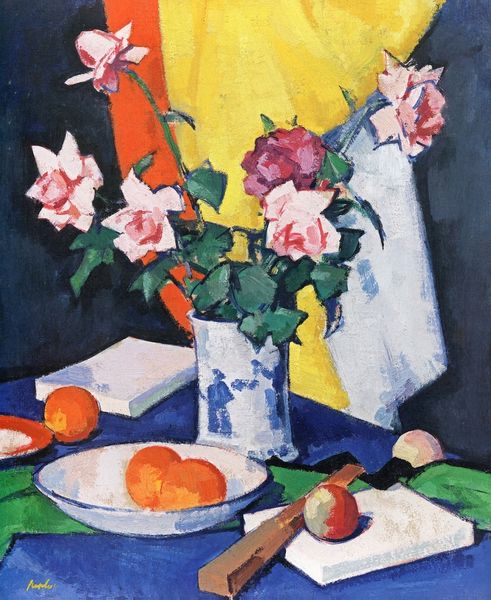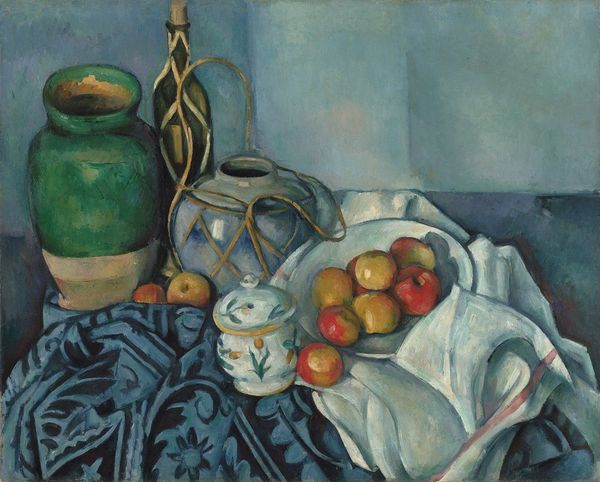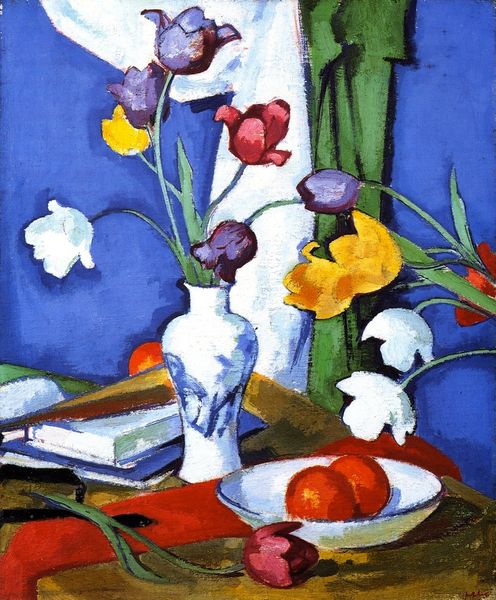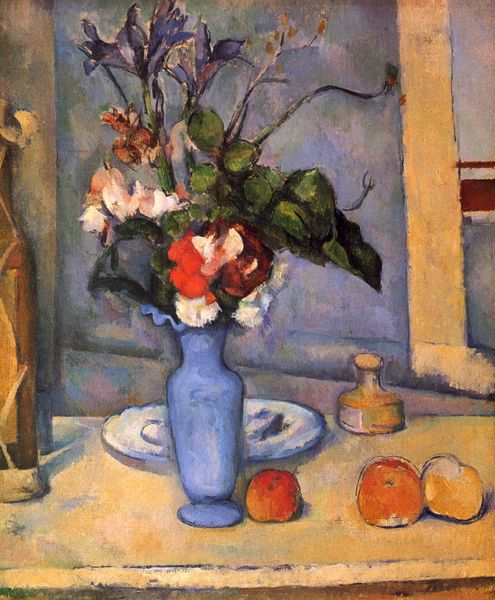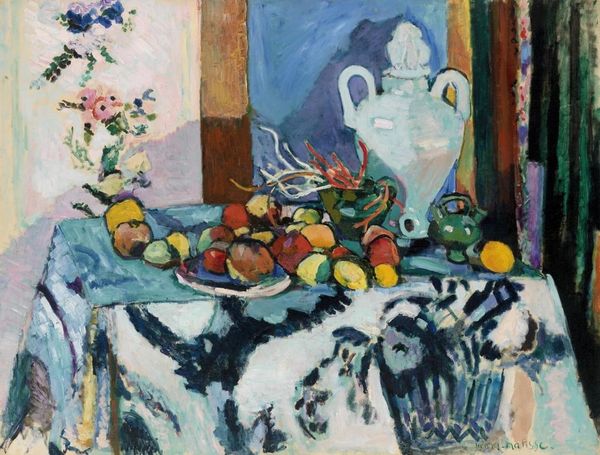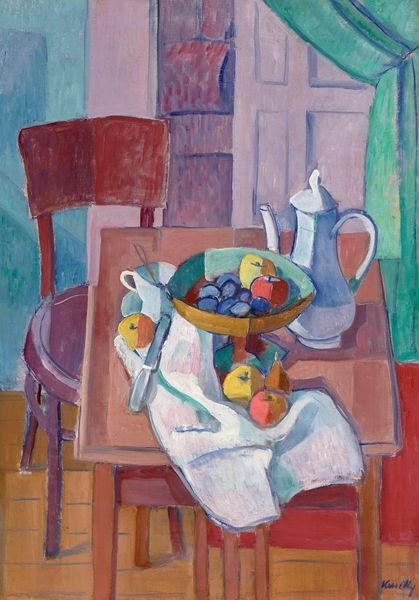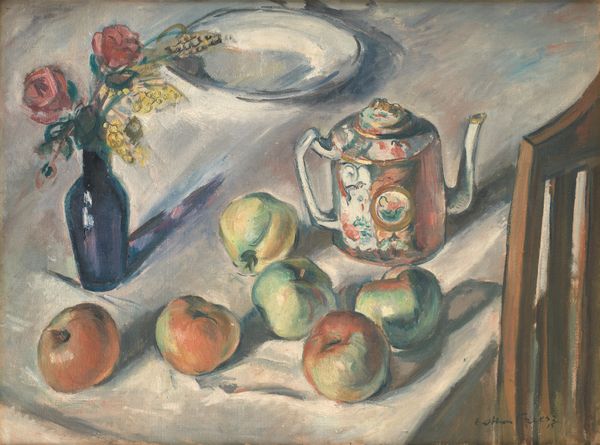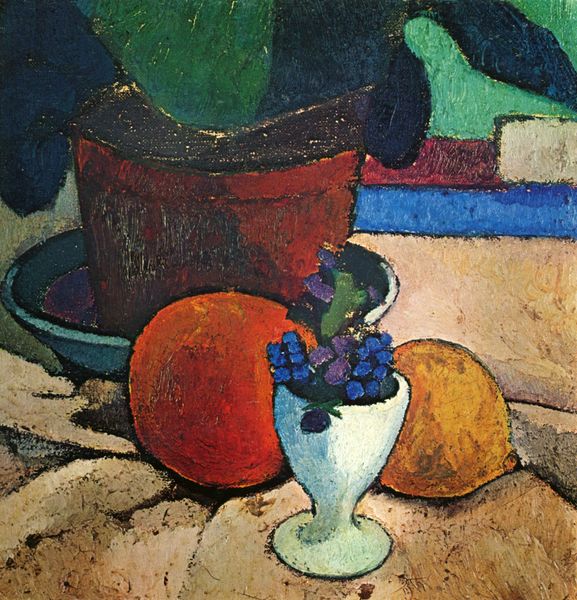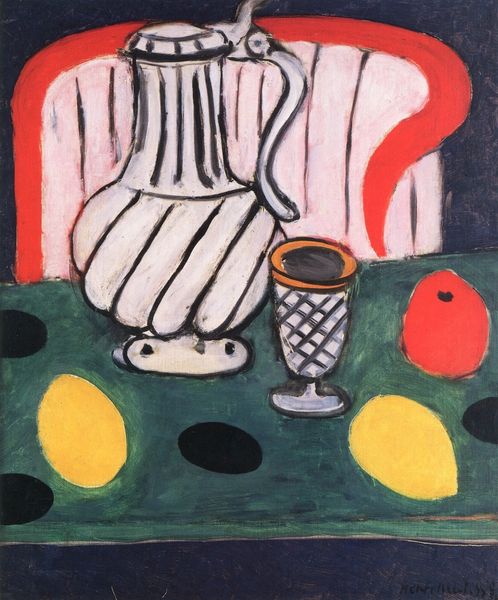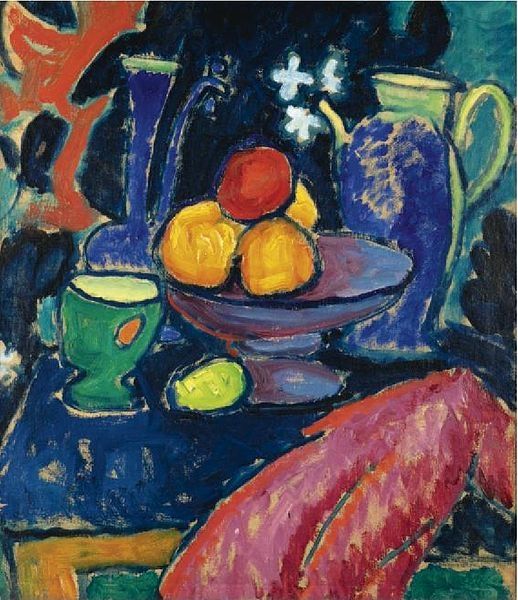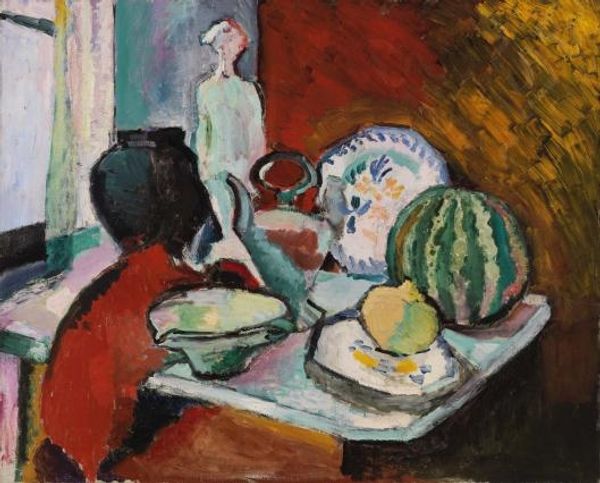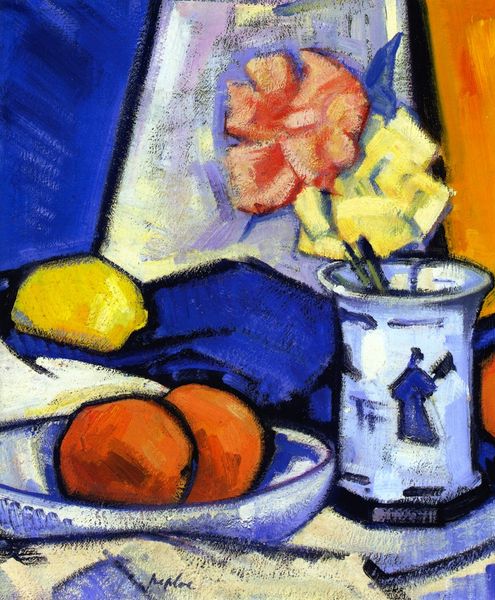
Copyright: Public domain
Curator: This is "Still Life with Tulips," created in 1919 by Samuel Peploe, a vivid example of oil on canvas work. The still-life is quite charming and it makes you wonder what lies beneath. What do you make of it? Editor: Yes, the bold colours immediately jump out, particularly the blues and reds contrasted against the soft pink tulips. But the shapes feel almost simplified, geometric. What is Peploe trying to convey through these formal elements? Curator: Consider how Peploe manipulates shape and colour. Observe the interplay between the flatness of the background planes and the roundness of the fruit. The tulips themselves are not meticulously rendered, but rather suggested through blocks of colour and line. One must consider that his intention wasn’t merely representational. Editor: So, the abstraction is deliberate? Curator: Precisely! Notice how the composition is constructed around a series of formal oppositions. We see the organic versus geometric, the flat versus the rounded, the cool colours versus the warm. These tensions create a visual rhythm, wouldn’t you agree? Editor: I see what you mean, the flat planes push the tulips forward. So, what does that kind of tension signify? Curator: It suggests Peploe is investigating the very nature of painting itself. The work prompts one to consider art for its arrangement and structure, inviting discourse of visual language, not simply what it depicts. Editor: That's fascinating. I originally saw a pretty still life, but now it seems more about Peploe thinking about his methods as an artist. Curator: Precisely! Shifting perspectives allows a richer experience.
Comments
No comments
Be the first to comment and join the conversation on the ultimate creative platform.

